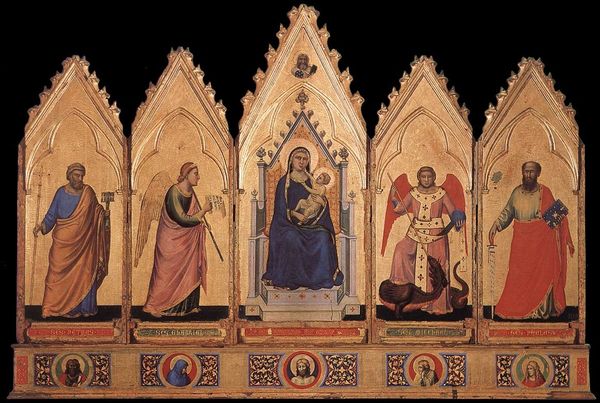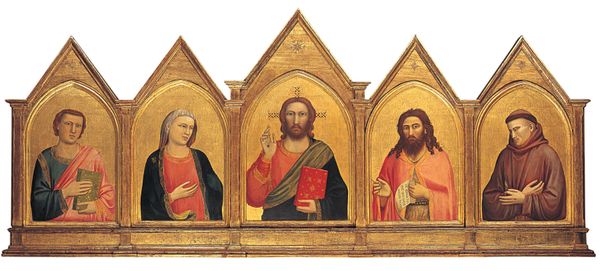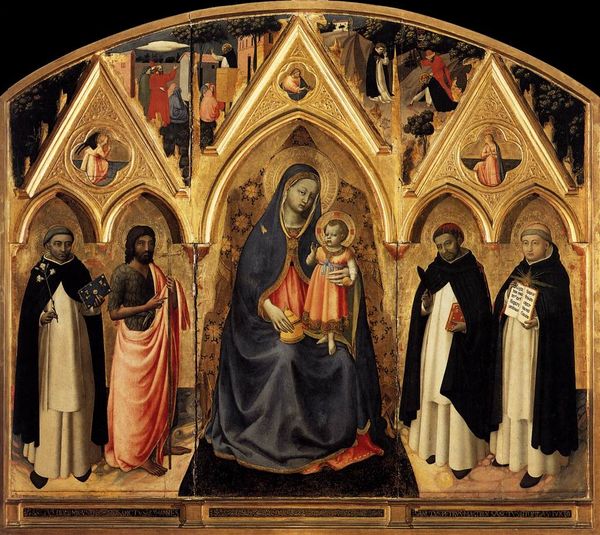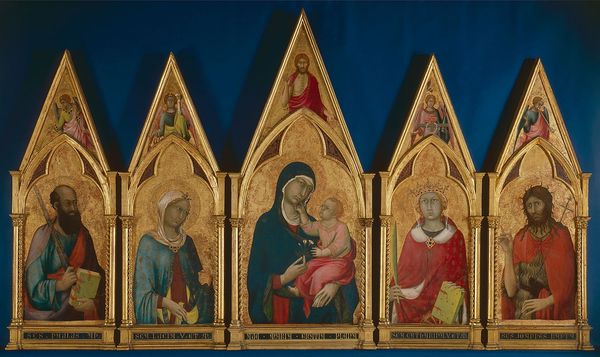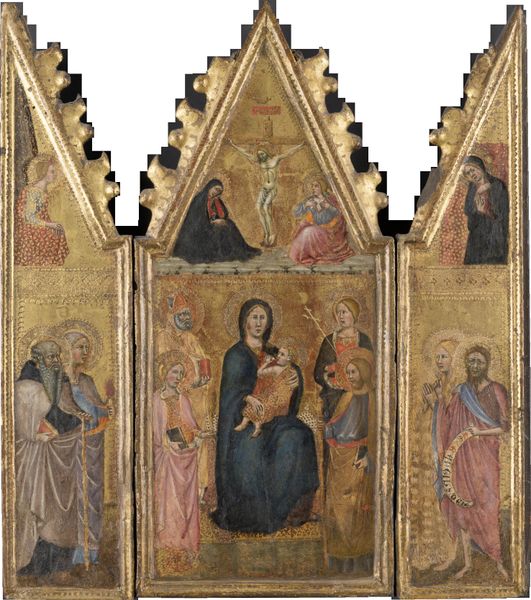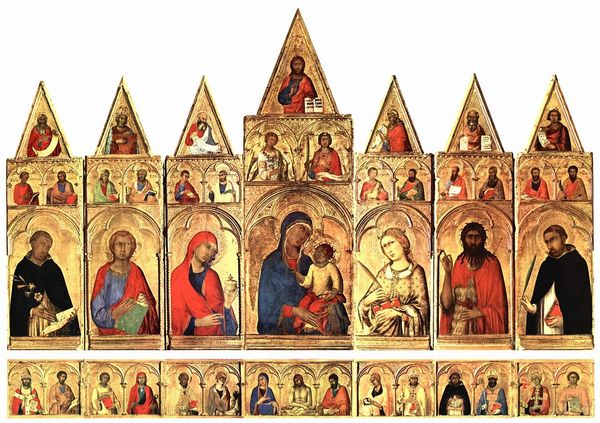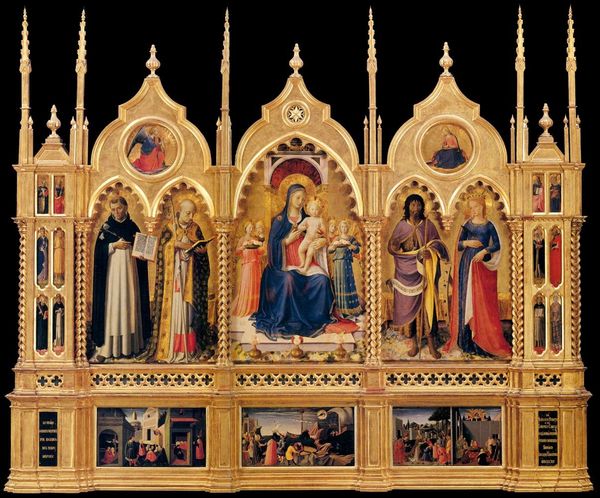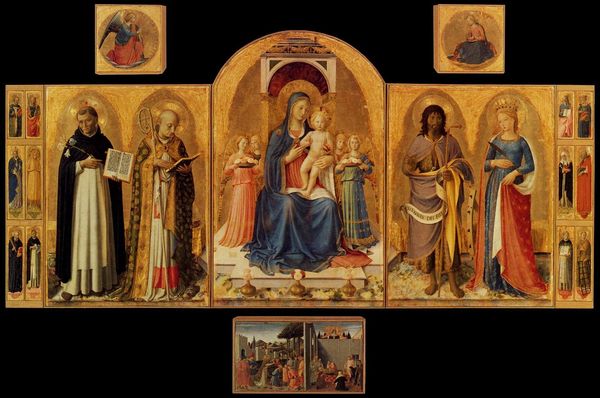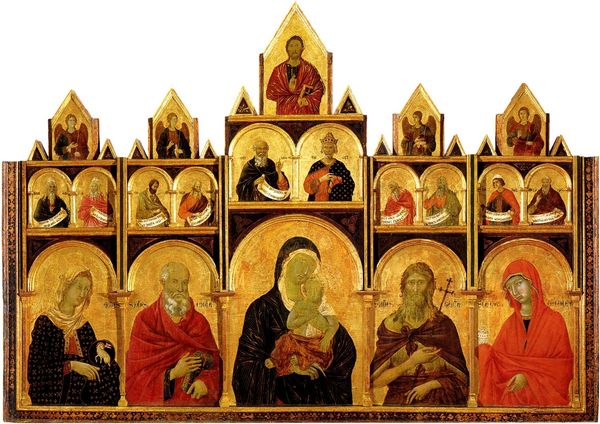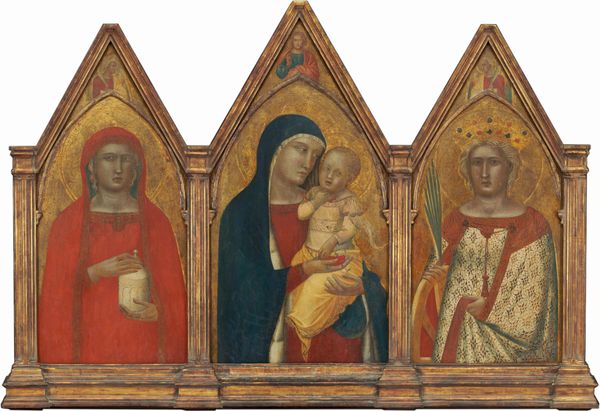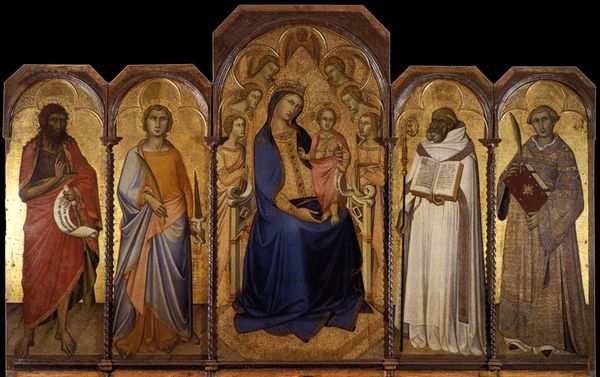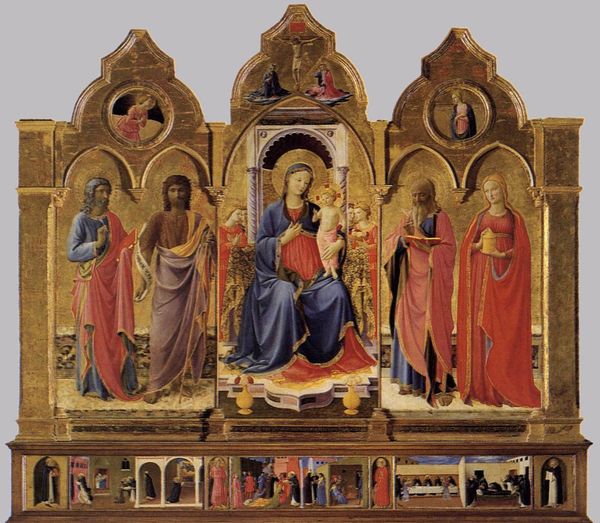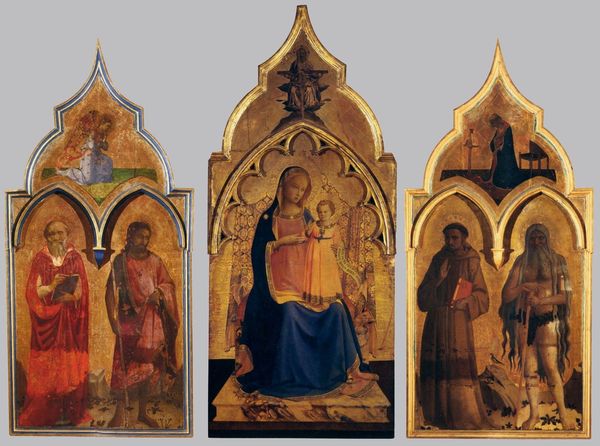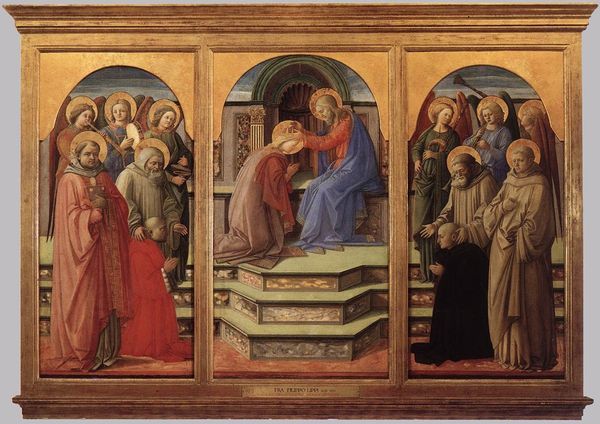
tempera, painting
#
portrait
#
medieval
#
tempera
#
painting
#
sculpture
#
gothic
#
holy-places
#
figuration
#
historic architecture
#
traditional architecture
#
christianity
#
history-painting
#
italian-renaissance
#
early-renaissance
Dimensions: 91 x 334 cm
Copyright: Public domain
Giotto painted this polyptych in Florence sometime in the early 14th century, using tempera on wood. Polyptychs such as this one served an important function in the social and religious life of the late medieval world. Note the figures: from left to right, we see Saint Nicholas of Bari, Saint John the Evangelist, the Virgin Mary with child, Saint Peter, and Saint Benedict. The arrangement is hierarchical, with the Virgin Mary at the center and the other figures arranged symmetrically on either side. It suggests a complex network of social relationships and a structured vision of society. This work originally stood in the high altar of the Florentine Badia. In the late 13th and early 14th centuries, the mendicant orders competed to build the grandest churches and to commission the most impressive art. Commissioning artworks like this was a display of wealth and power, but it was also intended to inspire religious devotion. To fully understand this artwork, we can turn to historical sources like monastic chronicles, economic records, and theological treatises. These can help us to understand the place of the Badia Polyptych in the religious and social life of the time.
Comments
No comments
Be the first to comment and join the conversation on the ultimate creative platform.
